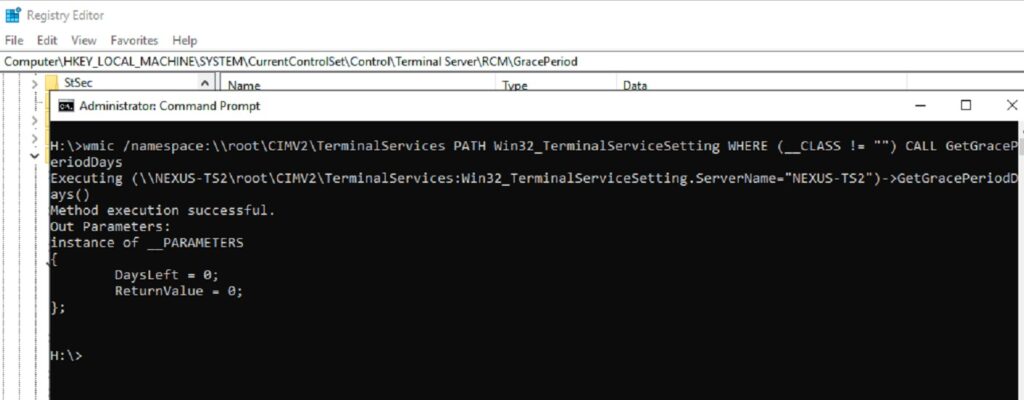Network programmability revolutionizes how networks are managed by enabling automation, simplifying configurations, and allowing dynamic responses to network conditions.
Mastering foundational network programmability concepts empowers network engineers to automate tasks, enhance agility, and optimize network performance efficiently.
1. Introduction to Network Programmability
Network programmability refers to the ability to configure, manage, and optimize network devices and services programmatically through software-based methods rather than manual configuration. It is an essential component of modern networking, particularly in software-defined networking (SDN) environments, where networks are designed to be more dynamic, automated, and responsive to changing demands.
Traditional network management relies heavily on manual configurations via command-line interfaces (CLI), which can be time-consuming, error-prone, and difficult to scale. In contrast, network programmability uses APIs (Application Programming Interfaces), automation scripts, and orchestration tools to automate network operations, improve consistency, and reduce the risk of human error. This approach enhances network agility, scalability, and operational efficiency, enabling organizations to respond quickly to evolving business needs and technology trends.
2. Key Concepts in Network Programmability
To effectively implement network programmability, it’s essential to understand several foundational concepts:
2.1 APIs (Application Programming Interfaces)
APIs are a set of protocols and tools that allow different software applications to communicate and interact with each other. In network programmability, APIs provide a standardized interface for interacting with network devices, enabling automation tools and scripts to retrieve information, configure settings, and monitor network performance.
Types of APIs Used in Network Programmability:
- REST (Representational State Transfer) APIs: REST APIs are widely used for network programmability due to their simplicity and compatibility with HTTP methods like GET, POST, PUT, and DELETE. They allow for easy integration with web-based applications and automation tools.
- NETCONF (Network Configuration Protocol) APIs: NETCONF is an IETF-standardized protocol designed specifically for managing and configuring network devices. It uses XML-encoded data and works over SSH for secure communications.
- gRPC (gRPC Remote Procedure Calls) APIs: gRPC is a high-performance, open-source RPC framework that uses HTTP/2 for transport, Protocol Buffers for serialization, and provides features like bi-directional streaming, load balancing, and more.
Example of Using REST API to Retrieve Device Information:
To retrieve device information using a REST API call with Python:
import requests
url = “http://network-device-ip/api/v1/devices”
headers = {“Content-Type”: “application/json”}
response = requests.get(url, headers=headers)
print(response.json())
2.2 Data Models
Data models define the structure of data exchanged between network devices and management systems. They provide a standardized format for representing network configurations and operational states, ensuring consistency and interoperability across different devices and vendors.
Common Data Models in Network Programmability:
- YANG (Yet Another Next Generation): YANG is a data modeling language used with NETCONF to define the structure of network configuration and state data. It allows for precise modeling of network elements and services.
- JSON (JavaScript Object Notation): JSON is a lightweight data interchange format commonly used with REST APIs. It is easy to read and write, making it suitable for web-based applications and automation scripts.
- XML (eXtensible Markup Language): XML is a flexible text format used for representing structured data. It is often used with NETCONF and SOAP (Simple Object Access Protocol) APIs for network management tasks.
Example of a Simple YANG Data Model for Network Configuration:
module example-network {
namespace “http://example.com/network”;
prefix “ex”;
container interfaces {
list interface {
key “name”;
leaf name {
type string;
}
leaf description {
type string;
}
leaf enabled {
type boolean;
}
}
}
}
2.3 Automation and Scripting
Automation and scripting are fundamental to network programmability, enabling repetitive and time-consuming tasks to be automated using scripts and playbooks. This approach reduces manual effort, increases consistency, and improves network reliability.
Common Scripting Languages and Tools Used in Network Programmability:
- Python: Python is widely used in network automation due to its simplicity, readability, and extensive library support. It can be used to interact with network devices via APIs, SSH, and automation frameworks like Ansible.
- Ansible: Ansible is an open-source automation tool that uses YAML-based playbooks to automate network configurations, software deployments, and other IT tasks. It is agentless, making it easy to deploy and manage.
- Terraform: Terraform is an open-source infrastructure as code (IaC) tool that allows for the definition, provisioning, and management of network infrastructure in a declarative configuration language.
Example of a Simple Python Script to Automate Network Configuration:
import paramiko
def configure_device(ip, username, password):
ssh = paramiko.SSHClient()
ssh.set_missing_host_key_policy(paramiko.AutoAddPolicy())
ssh.connect(ip, username=username, password=password)
<pre><code>commands = ["interface GigabitEthernet0/1", "description Configured by Script", "no shutdown"]
for command in commands:
stdin, stdout, stderr = ssh.exec_command(command)
print(stdout.read().decode())
ssh.close()</code></pre>
configure_device(“192.168.1.1”, “admin”, “password”)
2.4 Orchestration and Controllers
Orchestration tools and controllers manage network devices and services programmatically, providing centralized control and automation across the network. They enable dynamic adjustments to network configurations and policies based on real-time network conditions.
Common Orchestration Tools and Controllers:
- Cisco DNA Center: A comprehensive network management and automation platform that provides centralized control, automation, and analytics for enterprise networks.
- OpenDaylight: An open-source SDN controller that provides a platform for network programmability, automation, and control.
- Ansible Tower: An enterprise version of Ansible that provides a web-based interface, role-based access control, and centralized job management for automating IT tasks.
Example of Using Ansible Playbook for Network Automation:
To automate network configuration using an Ansible playbook:
- Create an Ansible playbook:
– hosts: switches
tasks:
– name: Configure interface description
ios_config:
lines:
– interface GigabitEthernet0/1
– description Configured by Ansible
- Run the playbook:
ansible-playbook configure_switch.yml -i inventory
3. Benefits of Network Programmability
Network programmability offers numerous advantages that enhance network management and operational efficiency:
3.1 Automation and Efficiency
Automating network tasks reduces the need for manual intervention, minimizes human error, and accelerates the deployment of network configurations and policies. This leads to increased operational efficiency and more consistent network operations.
3.2 Scalability and Flexibility
Network programmability enables networks to scale easily and adapt to changing business needs. It allows for the rapid deployment of new devices and services, as well as dynamic adjustments to network configurations in response to changing network conditions.
3.3 Enhanced Security and Compliance
Automated configuration management and policy enforcement help maintain consistent security settings across the network, reducing vulnerabilities and ensuring compliance with security policies and regulatory requirements.
3.4 Improved Troubleshooting and Diagnostics
Programmable networks provide greater visibility into network performance and behavior, enabling faster troubleshooting and diagnosis of network issues. Automation tools can also be used to proactively detect and resolve issues before they impact network performance.
4. Challenges and Best Practices in Network Programmability
While network programmability offers significant benefits, it also presents some challenges. To effectively implement network programmability, consider the following best practices:
4.1 Use Standardized APIs and Data Models
Ensure that the APIs and data models used for network programmability are standardized and supported by multiple vendors. This ensures interoperability and reduces vendor lock-in.
4.2 Implement Robust Security Controls
Secure programmable interfaces and automation tools to prevent unauthorized access and potential security breaches. Use strong authentication, encryption, and access control measures to protect network devices and management systems.
4.3 Continuously Monitor and Audit Network Changes
Regularly monitor and audit network changes to ensure compliance with network policies and detect any unauthorized changes. Use version control systems to track changes to automation scripts and playbooks.
4.4 Provide Training and Skill Development
Ensure that network engineers are trained in programming languages, automation tools, and scripting to effectively implement network programmability. Encourage continuous learning and skill development to keep up with evolving technologies and best practices.
5. Verifying and Troubleshooting Network Programmability
To verify and troubleshoot network programmability, network engineers can use the following commands and tools:
- Check API Connectivity and Status:
curl -X GET “http://network-device-ip/api/v1/status” -H “accept: application/json”
This command checks the connectivity and status of the REST API on a network device.
- Verify Automation Script Execution:
python automation_script.py
Run the Python automation script to verify its execution and check for any errors or issues.
- Monitor Ansible Playbook Execution:
ansible-playbook -vvv configure_switch.yml -i inventory
Use the verbose mode to monitor the execution of an Ansible playbook and identify any errors or warnings.
6. Conclusion
Foundational network programmability concepts are crucial for modern network management,
enabling automation, scalability, and improved security. By understanding and leveraging APIs, data models, automation tools, and orchestration platforms, network professionals can optimize network operations, enhance efficiency, and ensure robust security and compliance. Implementing best practices and continuous monitoring ensures a successful network programmability strategy that aligns with business objectives and technology trends.
QUIZ: Foundational Network Programmability Concepts
1. What is the primary goal of network programmability?
a) To increase manual network configurations
b) To automate network management tasks
c) To reduce data storage requirements
d) To simplify VLAN management
2. Which API type is commonly used for network programmability due to its simplicity and compatibility with HTTP?
a) SOAP
b) REST
c) SNMP
d) FTP
3. What is the purpose of a data model in network programmability?
a) To reduce network speed
b) To define the structure of data exchanged between devices and management systems
c) To manage IP addresses
d) To simplify user management
4. Which scripting language is widely used in network automation due to its simplicity and extensive library support?
a) C++
b) Java
c) Python
d) Perl
5. What is the role of Ansible in network programmability?
a) It is a data modeling language
b) It is a network automation tool that uses YAML-based playbooks
c) It is a network monitoring tool
d) It is a virtualization platform
6. Which command checks API connectivity and status on a network device using curl?
a) curl -X GET “http://network-device-ip/api/v1/status”
b) curl –check api
c) curl -status-check api
d) curl -list apis
7. What is the function of NETCONF in network programmability?
a) It provides network virtualization
b) It is a protocol for managing and configuring network devices
c) It is a firewall configuration tool
d) It reduces bandwidth usage
8. Which tool provides centralized control and automation for enterprise networks?
a) Cisco DNA Center
b) Microsoft Word
c) Cisco Webex
d) Google Drive
9. What does YANG stand for in network programmability?
a) Yet Another Network Group
b) Yes And No Grammar
c) Yet Another Next Generation
d) Your API Next Generation
10. What is a best practice for network programmability?
a) Overcommit resources
b) Use standardized APIs and data models
c) Avoid automation
d) Disable monitoring tools










